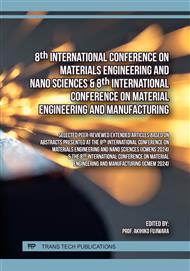p.3
p.11
p.21
p.29
p.41
p.53
p.65
p.71
Assessment of Mechanical Strength of A36 Steel with Flux Cored Arc Welding Process
Abstract:
Shielded Metal Arc Welding (SMAW) is a popular welding technology in the construction and industrial sectors due to its ease of use. Flux-cored arc welding (FCAW) has gained popularity in the construction sector and industrial settings. The Welding Procedure Specification (WPS) restricts material compatibility for FCAW due to systematic selection and qualification. Penetrant Testing exposes damage to welded specimens, ensuring they meet the standard. Non-Destructive Testing (NDT) and mechanical tests like tensile and bending tests determine the mechanical strength and weld characteristics of steel using FCAW. The results show the effectiveness of pWPS and satisfy the code and standard. Dye Penetrant Test results show no cracks and acceptable criteria for both side A and side B of the steel plate. Bending test results show expected yield points, but failures occur due to discontinuities in break force and failures in tensile strength.
Info:
Periodical:
Pages:
3-9
Citation:
Online since:
September 2024
Keywords:
Price:
Сopyright:
© 2024 Trans Tech Publications Ltd. All Rights Reserved
Share:
Citation:



